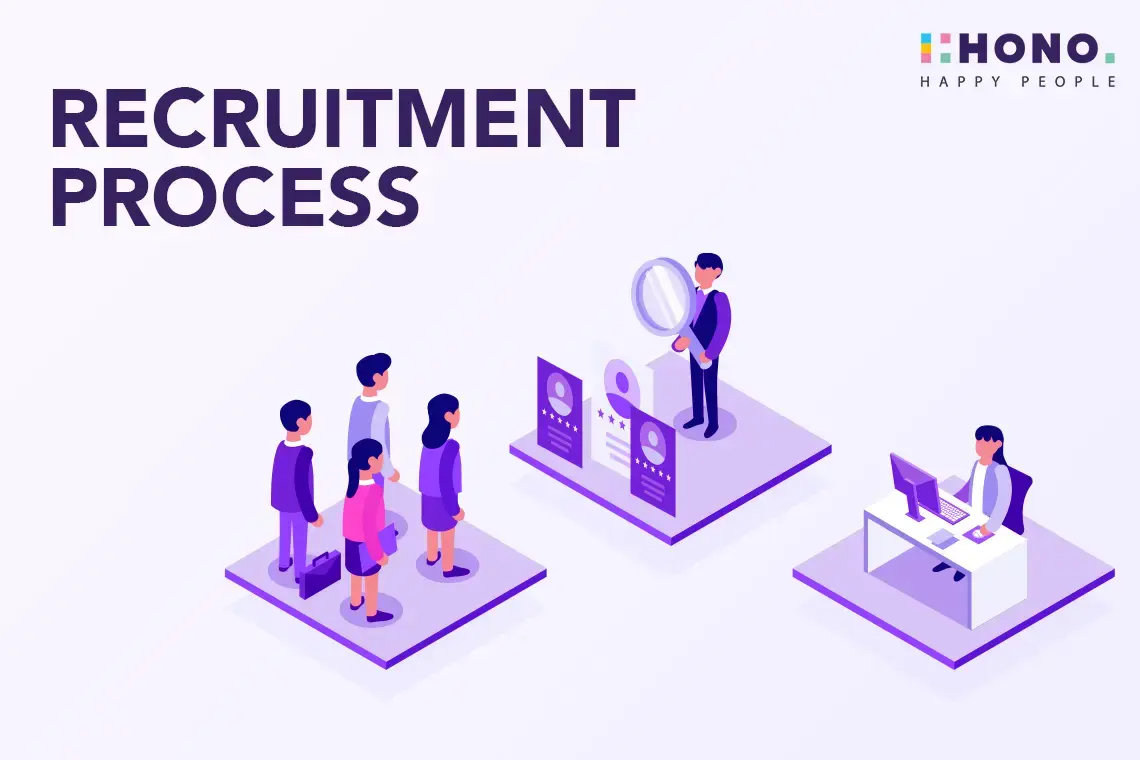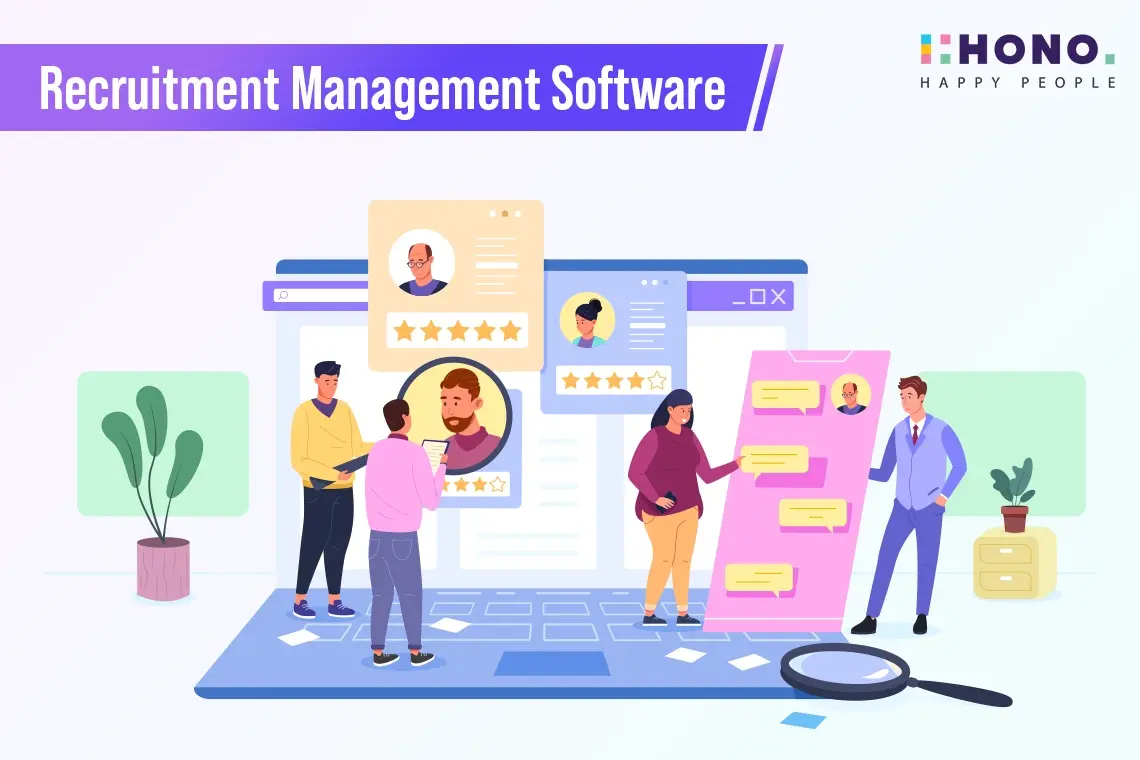The recruitment process serves as the backbone of human resource management, laying the groundwork for organizational success by securing the most valuable asset—talent. A recent McKinsey report underscores this, revealing that high-performing talent is 400% more productive than average performers, particularly in complex tasks. This statistic magnifies the importance of not just hiring, but hiring right. As such, a well-defined recruitment process is indispensable. It encompasses a sequence of steps crafted to attract, identify, and select individuals who are best suited for the organizational culture and role requirements.
HR Recruitment Process Steps: A Detailed Guide for Success
6 mins

Understanding and meticulously executing the recruitment process steps, from the initial vacancy identification to the final onboarding, are crucial. Gartner's analysis shows that organizations with a structured recruitment strategy can decrease time-to-hire by up to 20% and increase new hire quality by 9%. Whether it's the traditional 7 steps in the recruitment process or a more tailored approach, every stage is a building block towards assembling a top-notch team. From defining the role, sourcing candidates, to the selection and onboarding, each phase needs to be optimized for excellence. Today, where the cost of a bad hire can be as much as 30% of the employee's first-year earnings, the stakes are undeniably high, emphasizing the need for the best recruitment process steps as the linchpin of successful HR management.
Also Read: Features of Recruitment Software for Employees
Identifying the Need
The journey to recruit top talent begins with the crucial step of recognizing a vacancy. This initial phase in the recruitment cycle is not merely about noticing a gap but understanding the intricacies of the role and its contribution to the team's dynamics. It involves evaluating the need for the position, the timing of the hire, and how this addition will mesh with the existing structure to contribute to overall organizational goals. Aligning the vacancy with strategic objectives ensures that the recruitment process steps forward on the right path.
Creating a Job Description
The job description acts as a cornerstone for attracting the right candidates. It should articulate not only the responsibilities and daily tasks associated with the role but also the necessary skills and qualifications required to excel. Clarity is key; a well-written job description serves as a filter, deterring unqualified applicants and inviting those who are truly fit for the position. It's also a reflection of the company's values and culture, providing a snapshot of life within the organization.
Related: How Automated JD Creation is Transforming HR Efficiency
Sourcing Candidates
Sourcing candidates is an art that extends beyond just reaching out—it's about engaging potential talent through various channels. Today's HR professionals use an array of tools, from job boards to social media platforms, to tap into both active and passive talent pools. Here, employer branding is vital; it's what makes an organization stand out. A strong employer brand can significantly enhance the quantity and quality of applicants.
Screening Applications
Once applications pour in, the screening begins. This step is critical in narrowing down the pool to the most promising candidates. Many organizations utilize Applicant Tracking Systems (ATS) to manage this process efficiently, though it's imperative to maintain a human touch to ensure fairness and inclusivity. A comprehensive screening process considers a candidate's experience, skills, and potential cultural fit.
Conducting Interviews
Interviews are the window into a candidate's capabilities and personality. They can range from initial telephone screenings to more in-depth, in-person interviews or video calls. Structured interviews with a set of predetermined questions can ensure consistency and fairness, while behavioral and situational questions can provide deeper insight into the candidate's problem-solving and interpersonal skills. 
Assessment and Testing
Assessments and testing are about gauging the candidate's abilities in a tangible way. Whether through cognitive tests, technical exercises, or personality assessments, this step helps to predict a candidate’s performance on the job. It's a data-driven way to evaluate the alignment between the candidate's skills and the job's demands.
Background and Reference Checks
Before making an offer, conducting rigorous background and reference checks is essential for verifying the candidate’s past employment details, educational qualifications, and any other pertinent information. This due diligence can prevent costly hiring mistakes and ensure the integrity of the hiring process.
Apart from these 7 steps in recruitment process, the following steps enable the candidate to accept the offer and get onboarded upon acceptance of the offer.
Making the Offer
The offer stage is critical and requires a thoughtful approach, including discussions around salary with the benefits of recruitment software. It's not just about presenting an offer but selling the role and the company to the candidate, while also setting clear expectations. Clear, respectful communication throughout this phase is critical, as it can affect the candidate’s decision and their perception of the company.
Onboarding
The final step in the recruitment process is onboarding, which sets the stage for a new hire's future with the company. A structured onboarding program helps integrate the new employee into the team, clarifying roles, expectations, and the company culture. A positive onboarding experience not only fosters immediate engagement but also impacts long-term job satisfaction and retention.
Each of these steps contributes to a recruitment process that is thorough, fair, and designed to attract the best candidates. By meticulously following these steps, HR professionals can build strong teams that drive organizational success.
The recruitment process is a series of deliberate and strategic steps that lead to the acquisition of the right talent—a crucial factor in the HR equation for organizational excellence. By understanding and adeptly applying each stage of the recruitment process, from identifying the need to a well-structured onboarding, HR professionals can not only fill positions but can also enhance the cultural and operational fabric of their organizations. A commitment to refining these steps, backed by data and a deep understanding of the company's strategic direction, will ensure the recruitment process remains a robust driver of long-term success and growth. The end goal is clear: to transform the recruitment journey into an ongoing cycle of HR success and business innovation.
Discover how HONO's recruitment and onboarding solutions transform your talent lifecycle, from finding the perfect fit to ensuring a smooth Day 1 experience.
.png?width=70&height=70&name=Team%20HONO%20logo-01%20(1).png)
Team HONO








